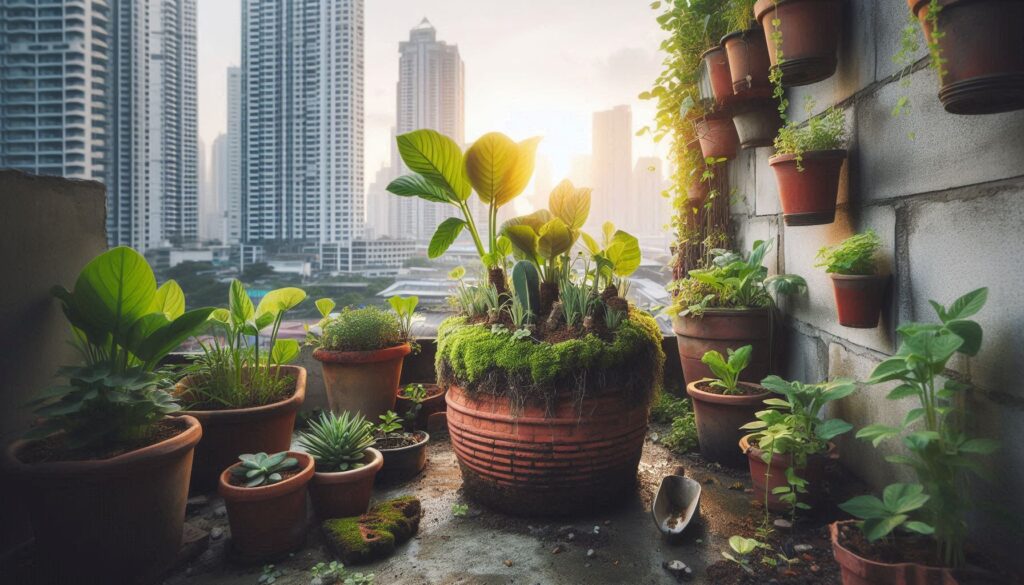Urban gardening has gained popularity in recent years as city dwellers seek to reconnect with nature, grow their own food, and create green spaces in the midst of urban environments. However, cultivating a garden in a small urban space presents unique challenges, such as limited outdoor area, poor soil quality, and lack of sunlight. In this article, we will explore a variety of urban gardening techniques and strategies specifically designed for small spaces, including balconies, patios, rooftops, and indoor areas. By utilizing innovative approaches and creative solutions, urban residents can transform their tiny patches of land into thriving gardens full of lush plants, colorful flowers, and fresh produce.
Container Gardening:

Container gardening is a versatile and practical technique for growing plants in small urban spaces with limited access to soil or outdoor land. By using containers such as pots, planters, hanging baskets, window boxes, and grow bags, urban gardeners can cultivate a wide variety of plants, including herbs, vegetables, flowers, and succulents. When choosing containers for a small space garden, it is essential to consider factors such as size, material, drainage, and mobility. Ensure that the containers have proper drainage holes to prevent waterlogging and use lightweight containers that can be easily moved to optimize sunlight exposure.
Vertical Gardening:
Vertical gardening is an innovative technique that maximizes vertical space in small urban environments by growing plants upward on walls, trellises, fences, and structures. Vertical gardening offers several advantages, such as maximizing space efficiency, improving air circulation, reducing pest problems, and creating visual interest. Urban gardeners can utilize a variety of vertical gardening structures, including trellises, living walls, pocket planters, modular systems, and hanging gardens, to cultivate a diverse range of plants in a compact area. Consider installing watering systems or self-watering planters to ensure proper hydration for plants growing in vertical structures.
Raised Bed Gardens:
Raised bed gardens are an effective technique for growing vegetables, herbs, and flowers in small urban spaces by creating elevated garden beds filled with nutrient-rich soil. Raised beds provide several benefits, such as better soil drainage, improved root aeration, reduced weed competition, and easier access for planting and maintenance. Urban gardeners can build raised beds using materials like wood, cinder blocks, recycled materials, or galvanized metal troughs to fit the available space and aesthetic preferences. Consider adding trellises or stakes to support climbing plants and maximize vertical growing space within raised bed gardens.
Hanging Gardens and Window Boxes:
Hanging gardens and window boxes offer a creative and space-saving technique for adding greenery to vertical surfaces in small urban spaces such as balconies, windowsills, and fences. Urban gardeners can hang plants in baskets, pots, or pocket planters from hooks, brackets, or railings to create cascading displays of flowers, herbs, and trailing plants. Window boxes can be mounted outside windows to bring vibrant colors and textures to urban facades and offer a platform for growing ornamental plants and edibles. Choose lightweight materials for hanging gardens and window boxes to ensure structural integrity and consider adding drip irrigation systems for efficient watering.
Indoor Gardening:
Indoor gardening is a convenient technique for growing plants inside small urban spaces, such as apartments, lofts, and condos, where outdoor gardening may be limited. By utilizing natural light, artificial lighting, and climate control, urban gardeners can create thriving indoor gardens full of houseplants, herbs, vegetables, and microgreens. Select plants that thrive in indoor conditions, such as low-light tolerant plants, compact varieties, and air-purifying plants, to create a healthy and vibrant indoor garden. Consider incorporating vertical shelving units, hanging planters, and wall-mounted planters to maximize space efficiency and enhance indoor aesthetics.
Community Gardening and Shared Spaces:
Community gardening and shared spaces are collaborative techniques that bring together urban residents to create and maintain communal green spaces for gardening, recreation, and social interaction. Community gardens can be established in vacant lots, public parks, rooftops, or shared courtyards, providing opportunities for neighbors to participate in gardening activities, share resources, and build community connections. Consider collaborating with local organizations, schools, or community centers to establish community garden projects and organize educational workshops, workdays, and social events to engage community members in sustainable gardening practices and environmental stewardship.
In conclusion, urban gardening techniques for small spaces offer creative and sustainable solutions for city residents to cultivate green spaces, grow their own food, and connect with nature in urban environments. By utilizing container gardening, vertical gardening, raised bed gardens, hanging gardens, window boxes, indoor gardening, and community gardening strategies, urban dwellers can transform their limited spaces into thriving gardens that contribute to a more sustainable, resilient, and vibrant urban landscape. With innovation, creativity, and a passion for greening the concrete jungle, urban gardeners can play a vital role in promoting biodiversity, food security, and community well-being in cities around the world.

